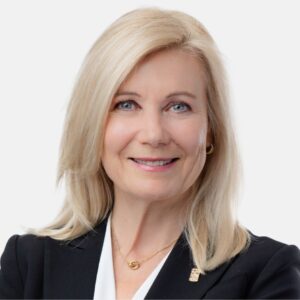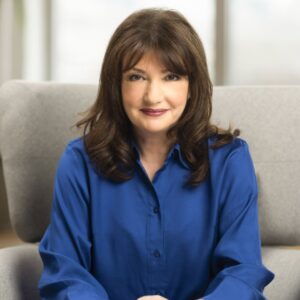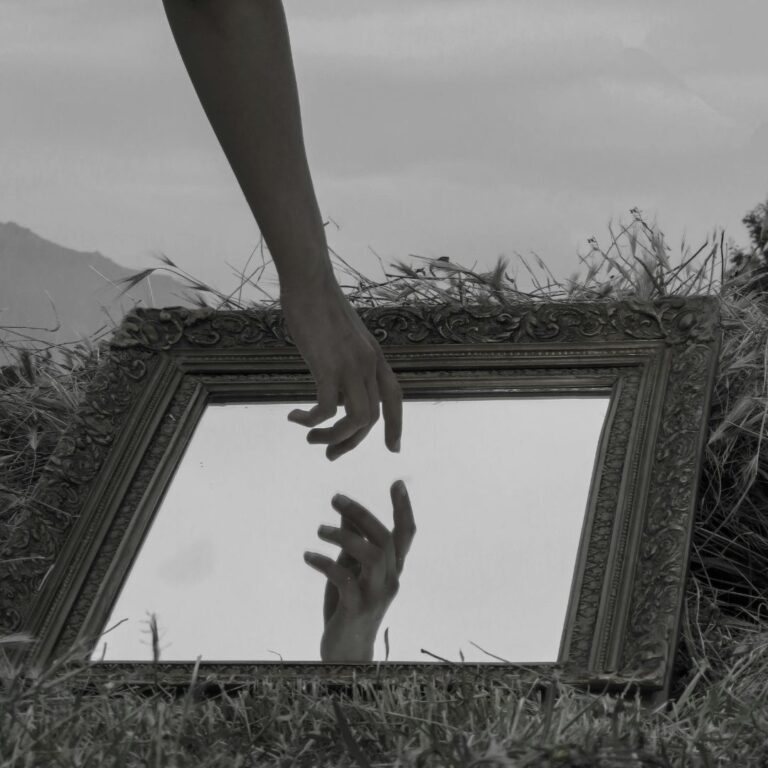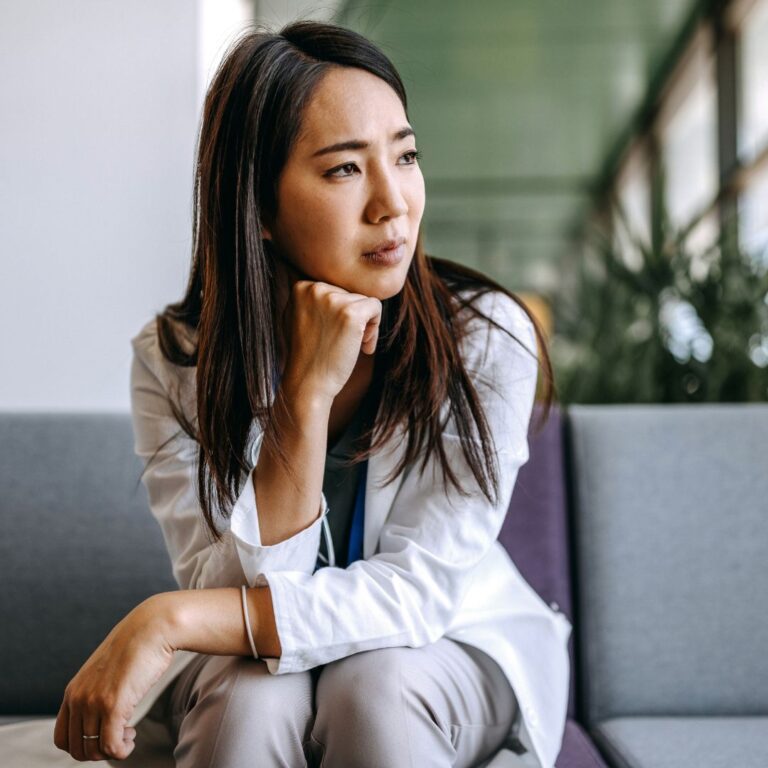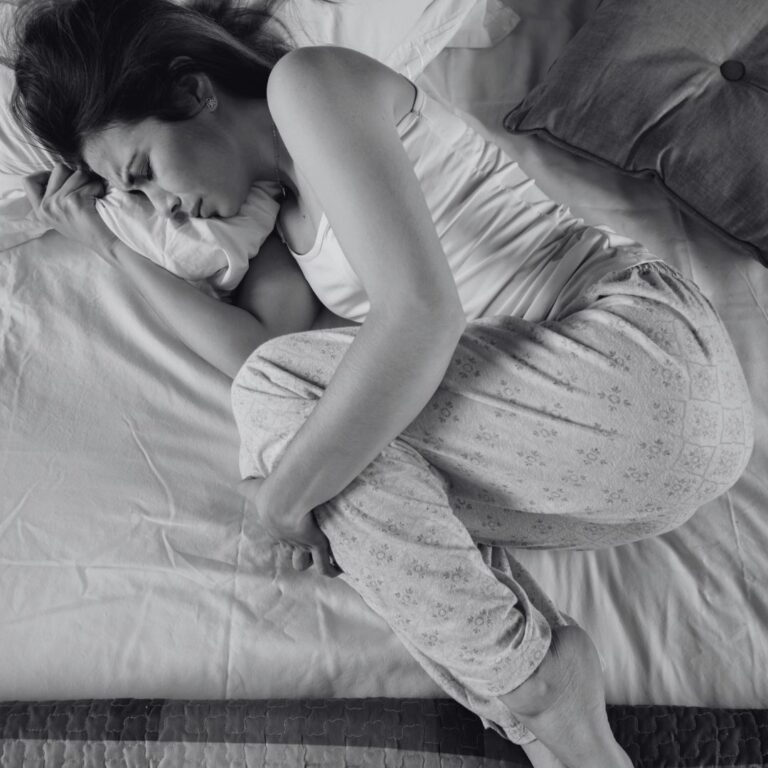Michelle Valberg – World famous photographer and ambassador for Canada’s north
Michelle Valberg is a celebrated photographer whose photos of people and nature have been featured in publications and exhibits worldwide. As the Canadian Nikon Ambassador and the first Canadian Geographic Photographer in Residence, Michelle talks about the challenges and opportunities she has faced as a female entrepreneur in a non-traditional profession and about using her camera lens to build a better world.
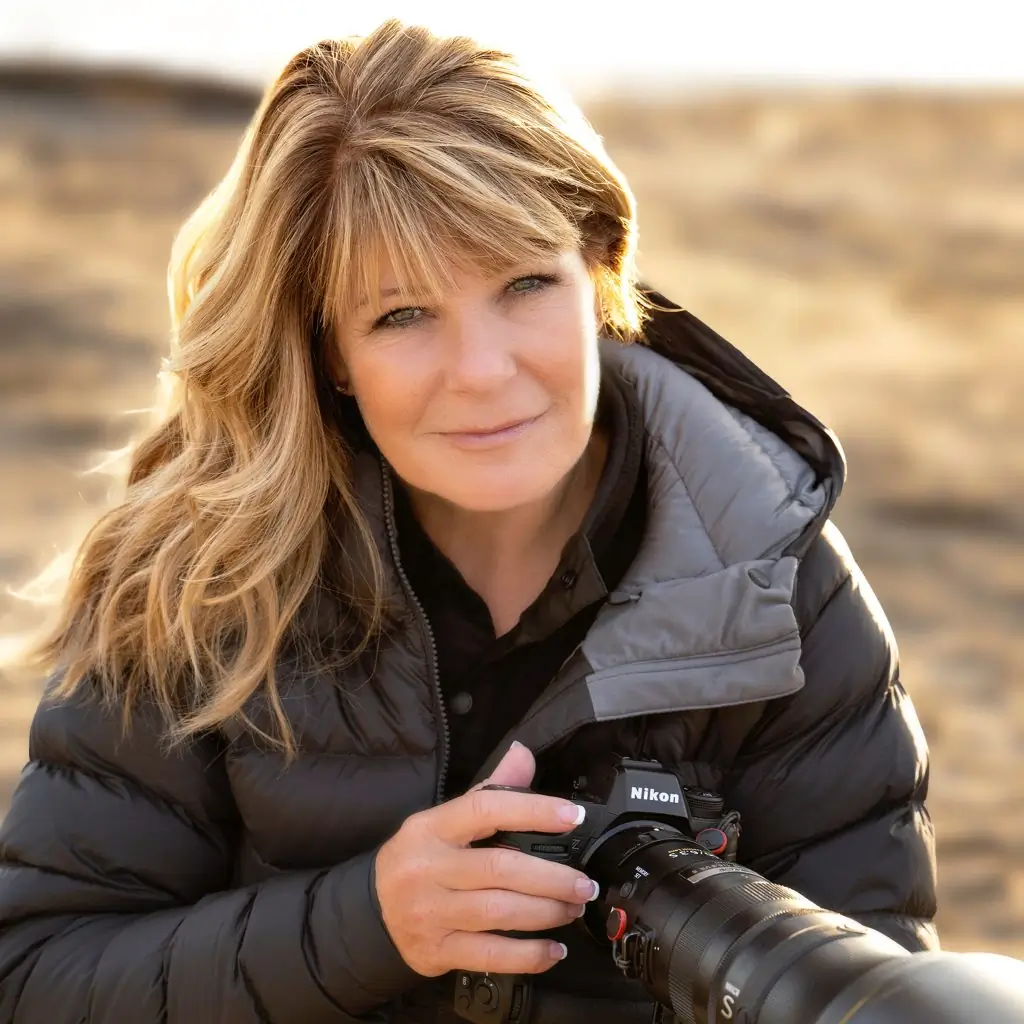
Pursuing her passion — and making a living at it
Catherine Clark: Michelle, you were on your way to a career in golf before you started photography. Can you talk to us about how this happened?
Michelle Valberg: I wanted to be a golf pro. I was lucky enough as a kid to golf as much as I did and have the opportunity. It was a passion, but at that age we don’t really know what we want to do. It was when my dad sat me down and said, “Hey, we’ll support you if that’s what you want to do. But is it really what you want to do? Is it your full passion? Do you think you can win? Do you think you can do this full-time?” It wasn’t until he said that I guess I went, “Do I really have it?” My dad has been influential in my life, not only as a father but as a mentor. A couple of months later, he gave me his camera. I was going to Lake Placid, and I picked up the camera, took a couple of photos, and I came back and said, “Okay, that’s it. I want to be a photographer.”
How she overcame age and gender barriers
Jennifer Stewart: You have a business sense because you run a very successful business. As a woman and as an entrepreneur, what has that experience been like?
Michelle Valberg: I started my business when I was in university, after my first year. Again it was my dad saying, “Why don’t we keep you busy doing what you love to do? And start now, there’s no reason why you can’t.” Both my parents always told me there wasn’t anything I couldn’t do. At that age, I was trying to figure out how to fit into this business world. There were such great photographers already established and doing amazing things, like, where did I belong? How did I fit in at 17 years old? And how did I do what I love and do it to make a living? In one way, it was natural because I did it so early and I didn’t know any different — I just knew I wanted to be a photographer, and I wanted to be a businessperson, and I wanted to work for myself. Obviously I had a lot of mistakes, some ups and downs and bumps and curves, but it wasn’t just me — it was the support I had from everyone that made me successful in a career as a photographer.
Catherine Clark: There were two things that made things a little tougher to start with — you were young and you were female. Did you have to make special accommodations because of either of those things?
Michelle Valberg: Absolutely. I decided to do video instead of photography at first because it wasn’t as saturated, and I also knew it was going to be the future. It was an easier way in because I could offer services that only a few people were doing, but being taken seriously as a young female. I was doing people’s weddings and events and things with parents that were well older than me and sometimes the clients were older than me as well. So just the confidence I had to show.
I also was married to somebody who was well-known at the time, and most people would refer to my business as his even though he had absolutely nothing to do with it. When I had to borrow money, I had to have him cosign even though he was an athlete, so he wasn’t even making money. Then when we divorced, I bought him out of the house. So, I was the one who had to come up with the money; I had to have my mother cosign the remortgage on my house that I had been the one paying for all along.
Why it’s important to regularly re-examine career choices
Jennifer Stewart: People have underestimated you, and it made you rise even stronger. Can you talk to me about that?
Michelle Valberg: Anytime somebody tells me no, I just want to do it that much more. You rise up, and I’m constantly finding ways to find solutions. Don’t tell me “no,” tell me “maybe not” and I’ll find a way to make it happen. I’m so incredibly happy to support my friends and colleagues in any way that I can because I couldn’t have had the success that I had as an entrepreneur very early on without amazing women to not only look up to but to help me. We need each other. We’re all in this together.
Catherine Clark: Have you always felt that you are doing the right thing career-wise? Was there ever a point where you thought, “Maybe I’ve got to do something different?” Or have you always known this was it for you?
Michelle Valberg: I’m incredibly passionate about photography, and ever since I picked up that camera and said I wanted to be a photographer I’ve never questioned it. However, with bumps and the curves and the turns our lives take, there have been definite times that I’ve said, “Oh, can I continue? Can I make this happen?” It’s important for us to look at those opportunities, or maybe say, “Hey, maybe I should pivot a little bit differently” because it will redefine you and either make you change a path or make you more committed to continue to do what you’re doing. And this is what COVID has done as well — it’s made us pause and given us time to reflect and redefine. Many of us must really look at where we’re going. We’re all learning how to pivot.
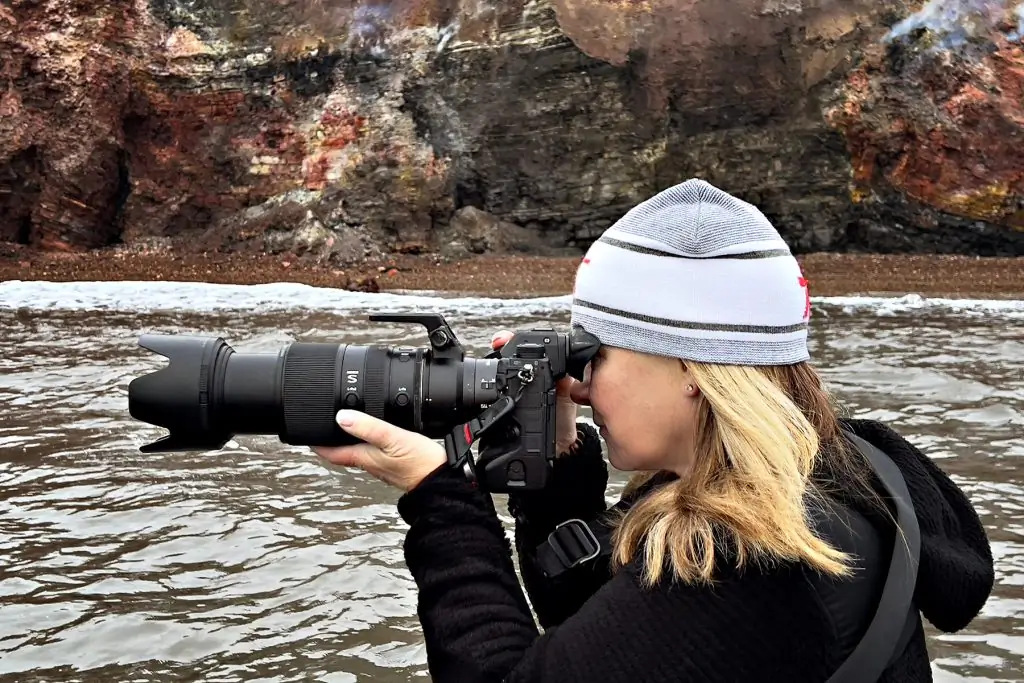
Jennifer Stewart: Thank you for your Planet Hope series and the light you’re shedding on many entrepreneurs and community leaders within Ottawa. Can you tell us what spurred the series and what you’ve learned as a result of the series?
Michelle Valberg: It’s been a gift. I was in Vancouver and arrived home on March 13 when the world changed. I went into self-isolation for two weeks — even though I was coming from Canada, I thought I needed to stay put. I didn’t leave my house other than just to walk outside and look at the snow, trying to find little animals to photograph. I felt compelled after five weeks to go and see downtown Ottawa — I wanted to see what it was like.
As a visual storyteller, it was hard not to try to document what was this part of our history as it was unfolding. I walked the downtown streets and cried and looked in these empty businesses and really contemplated for all of us entrepreneurs just the reality — it was so eerie, it was so empty. I ran into a friend who has a beautiful store, and we shared this raw, tearful conversation about our new reality and the future and what was it going to look like. And I asked if I could photograph her, so she sat down in front of her store and looked so sombre. Even her dog looked sad.
And then I was talking to my husband, who was also talking about how they had to go to medical calls now with full protective equipment, so I said, “Can I come down and photograph that?” So after those two shoots, I just went, “Okay, I’ve got to continue. This is my chance to share a few of those stories that are happening throughout this pandemic.”
Believing in your dreams
Catherine Clark: What advice do you have for other women who feel they need to make a change in their lives?
Michelle Valberg: Just what my parents told me: there’s nothing you can’t do. If it’s truly your passion and it’s what you want to do, if you’re not happy doing what you’re doing now and you know you can be happy doing something else, isn’t that ultimately what is the most important? Seek advice, gather your peeps, and believe in what you do. That’s most important — believing in your dream and committing to it and working really hard. If you’re up for that and ready for it, just do it. If you’re in your 50s and 60s and haven’t done it, anything is possible and you can still do it.
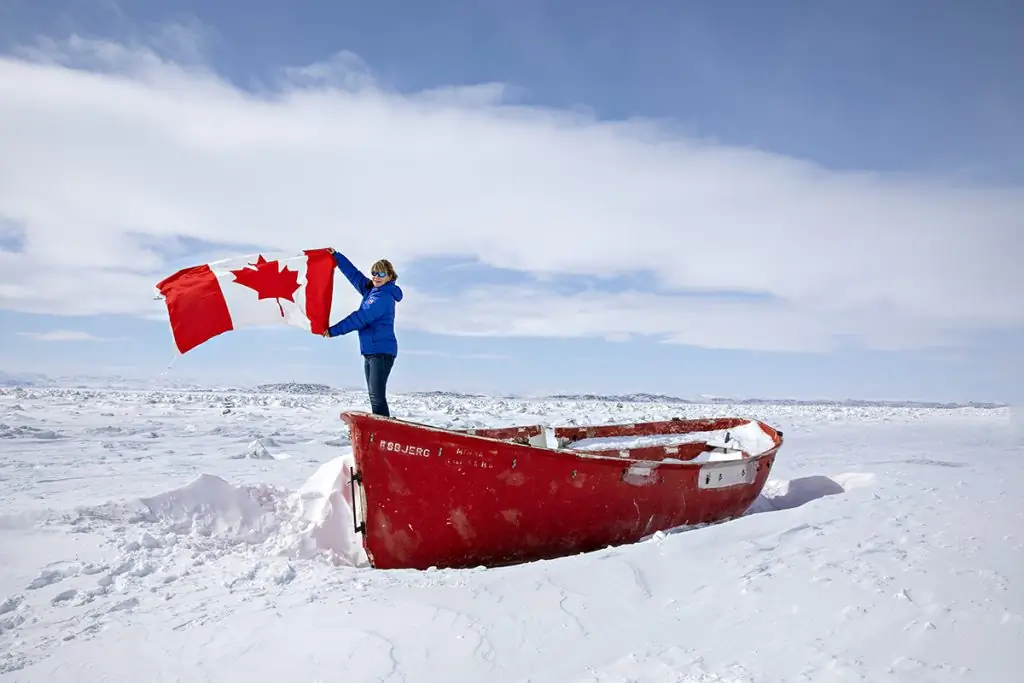
Supporting the North and Northern youth
Jennifer Stewart: You’ve been to the Arctic more than 60 times. Can you take us back to your first trip and explain why you fell in love with this vast region of our country?
Michelle Valberg: I wanted to do a book on the environment, and I could not do a book on Canada without getting to the Arctic and I really didn’t know anything about it. I made a phone call, and Dave Reid answered the phone, and that conversation led me to have a contract and reach out to Nunavut Tourism, Above and Beyond Magazine, and Adventure Canada.
Two weeks later, I headed up to Pond Inlet and stood on the flow edge where the ice ends and the open water begins at springtime. I came face to face with narwhal, bowhead whales, polar bears. I stood on the ice in the middle of this vast, beautiful, incredibly majestic part of this world, and just knew this was my calling. I need to share the North with the South, I need to tell people what we have up there, from the people to the landscape to the animals. With the environment, what is happening in the Arctic is happening faster there and will come down and affect us all sooner than later. So, it was important to share what we have in this region.
Catherine Clark: Tell us about Project North and why you’re so passionate about it.
Michelle Valberg: On that first trip to Pond Inlet, I saw the love of hockey and the community’s passion for the sport. I also went into the store and saw that a two-litre carton of milk costs $18; the food pricing in these small communities is just ridiculous and I wondered how they even got hockey equipment up there.
So, when my relationship continued with Adventure Canada, and I was heading up there the year later, I just said, “Can I bring up some hockey equipment?” The response was so wide and fantastic that I had to much equipment and had to go to First Air and ask for their help.
Eleven years later, we’ve delivered over a million dollars of hockey equipment and soccer equipment. And now, we’re delivering face shields with help from Miller McConnell — they’ve donated 500 shields — and we’ve helped a women’s project to help provide feminine products. If you believe in it, work hard for it, and ask for help — magic can happen.

